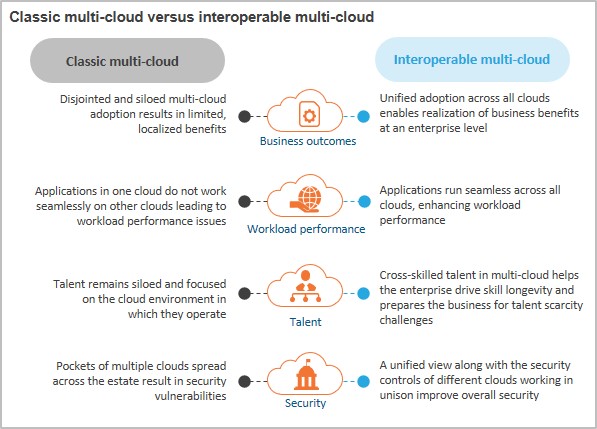Business Transformation through Multi-cloud
Interoperability is the Key to Success
With more than 90% of enterprises having adopted the cloud, the focus is shifting from simple efficiency gains to digital transformation. At the same time, enterprises are realizing that one cloud does not fit all, resulting in a multi-cloud approach. While this approach is helpful, it presents a new set of challenges, including cloud silos, in which each cloud operates independently and, thus, fails to deliver the expected business value. What is needed to succeed is an interoperability strategy. In this viewpoint, we begin by taking a detailed look at the advantages of an interoperable multi-cloud versus the classic multi-cloud:

The approach to multi-cloud interoperability should be inclusive and should factor in considerations such as multi-paced maturity, legacy investments, cloud vision and investment roadmap, the industry, regulations and compliances, and security.
In this report, we explore enterprise-based multi-cloud interoperability by answering the following questions:
- Why should enterprises care about multi-cloud interoperability?
- What is the current state of multi-cloud, what is driving adoption, and why are enterprises not realizing anticipated benefits?
- What are the building blocks of multi-cloud interoperability? How should enterprises enable interoperability in a new environment versus an existing environment?
- What are the key factors for successfully adopting multi-cloud interoperability? How should enterprises plan for the future?
